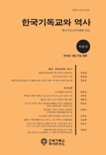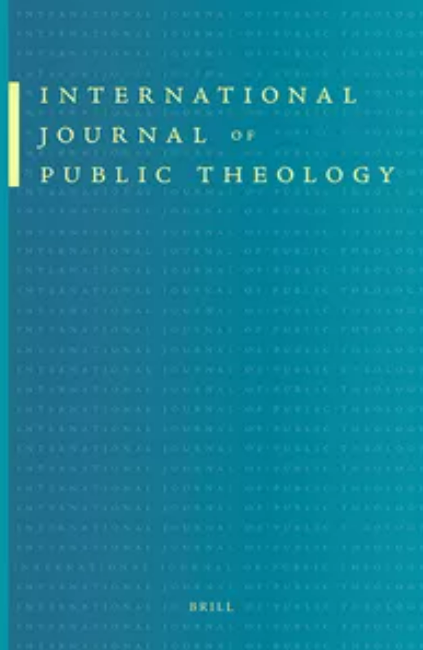지난 20세기 초에는 전 세계기독교 인구의 약 80%를 차지했던 코카서스인, 즉 유럽·북미·호주 등에 거주하는 백인 기독교인의 비율은 이제 25%에 지나지 않으며 지금 추세라면 앞으로 그 비율이 더 떨어질 것은 자명하다. “세계기독교 무게중심의 ‘남반구’ 이동”이라 불리는 이 명제에 대해 오늘날 역사가와 신학자를 비롯한 많은 학자들이 이 변화된 지형도의 의미와 과제가 무엇인지를 밝히는 데 에너지를 집중 투자하고 있다. 실제로, 1980년대 초반부터 여러 선구자들의 수고로 서구에서는 이런 비서구기독교의 역사와 문화, 신학을 서구교회의 선교역사, 경건주의 및 복음주의 운동 역사, 부흥운동사, 문화 및 선교인류학, 종교학, 사회학 등과 연계해서 연구하는 ‘세계기독교학’(Studies in World Christianity 또는 Global Christianity)이 하나의 새로운 학문으로 공식 등장했다. 약 30년 동안 성장을 거듭한 이 연구 분과가 오늘날 여러 대학과 신학교, 학회에서 독립된 학문 영역으로 자리를 잡으면서, 서구기독교의 역사에서 새로운 연구 과제를 찾는 데 어려움을 느낀 많은 신진연구자들을 끌어들이고 있다. 이 학문이 이름 그대로 ‘세계화’를 담보할 수 있었던 가장 큰 동력은 ‘예일-에딘버러 선교운동역사 및 세계기독교학회’라는 전 세계 학문 네트워크의 지속적인 성장이었다. 1992년부터 매년 예일대학와 에딘버러대학에서 교대로 열리고 있는 이 학회는 ‘선교운동의 역사적 양상들과 세계기독교의 발전상에 대한 정보를 논의하고 교환하는 일을 촉진하기 위해, 무엇보다도 이 정보를 문서화하기 위해’, 그리고 ‘정치·사회·외교·종교·역사 영역에서 나온 관점들을 선교운동의 의미와 이 운동이 전 세계에 끼친 효과를 재평가하는 데 활용’하는 포럼이다. 지난 3년간 이 학회를 통해 파악된 세계기독교학의 최근 동향은 다음과 같다. 첫째, 발표자 수는 참석자 수의 절반 정도로, 논문을 통한 공헌보다는 배우는 데 관심이 있는 학계 입문자들이 많이 참석한다. 둘째, 발표자 비율은 7대 3 정도로 여전히 서구권 학자가 많지만, 세계적 명성이 있는 서구권 학회 중 비서구인 참석자 비율이 가장 높다. 셋째, 비서구권 발표자들 중에는 아시아권 비율이 압도적인데, 이는 정치·경제·학문적 여건에 비례한다. 넷째, 아프리카권은 가나와 나이지리아 등 특정 국가의 약진이 두드러진다. 다섯째, 세계기독교 인구 분포에서의 엄청난 약진에도 불구하고 지난 100년간 중남미 기독교는 학문세계에서 존재감이 거의 없다. 또한 학회 발표논문의 지역별 통계상의 특징으로는, 첫째, 오늘날 세계기독교학 연구는 주로 아시아와 아프리카에 집중됐으며, 중남미나 북미 인디언, 오세아니아, 소종파 등의 주제는 무시되고 있다. 둘째, 독립된 ‘아프리카기독교학’이 활성화되어 빠르게 성장하고 있는데, 이는 사하라이남 아프리카 문화가 전체적으로 동질성을 갖고 있기 때문이다. 셋째, 중국기독교의 압도적 인기로, 관련 연구자들 중 80%는 유럽·미국 출신이다. 세계기독교학의 최근 동향은 교회사나 기독교사(史)가 특정 전통·지역·시기만 따로 떼어서 독립적으로 연구할 수 있는 주제영역이 아니고, 언제나 문화와 국경의 영역을 넘어 서로 영향을 주고받는 네트워크의 역사라는 것을 보여준다. 한국기독교를 ‘세계기독교’ 또는 ‘아시아기독교’라는 전체적인 틀 안에서 바라보고 자리매김하는 연구가 더 많이 필요한 이유다.
In the early twentieth century, approximately 80% of all Christian populations were Caucasian, who generally resided in Europe, North America, and Oceania. But now the proposition of white people of global Christian population accounted for only 25%, which is expected to decline to 20% in 2025. This proposition, called ‘the shift of Christianity's center of gravity into the Global South' and its significance have been studied by many serious scholars in the West as well as in the Global South. Indeed, from early 1980s studies in world Christianity or global Christianity officially emerged as a new area in Christian studies which examined the history and theology of global Christianity in relation to mission history of the Western churches, history of pietism and evangelicalism, history of revivals, cultural or mission anthropology, religions, and sociology. As for the last thirty years this academic field has established itself in many universities, colleges, academic conferences and societies as an independent area of study, younger generation of scholars who had felt a difficulty to find a new research topic in the traditional areas of theology and history have turned their eyes to this new world. Though this study of world Christianity is still in the formative period in comparison with other traditional areas of theology and history, it is very likely that this academic world will sustain its life in the future, since the churches in Asia, Africa, and Latin America obviously will lead the coming generations in world Christianity. One of the most dynamic forces by which the study of world Christianity could secure academic globalization as the name represented was the continuous growth of global network among the scholars. The Yale-Edinburgh Group on the History of the Missionary Movement and World Christianity has been an informal group of scholars in this field. The annual academic meeting, which has been held at Yale Divinity School and the University of Edinburgh by turns from 1992, "was formed to facilitate discussion and exchange of information about historical aspects of the missionary movement and the development of world Christianity, with special emphasis on the sources for documentation. It is a forum where viewpoints from the fields of political, social, diplomatic, and religious history can converge to reassess the significance of the missionary movement and its worldwide effects."The latest trends of the study of world Christianity, which has been interpreted through the analysis of the last three Yale-Edinburgh group meetings in 2011-2013, are as follows: First, the number of those who presented in the conferences was about a half of the participants. Second, the ratio between Western presenters and Non-Westerners was 7:3, which means that the dominance of this academic field is still in the hands of Westerners. Third, among the non-Western speakers, Asian scholars appeared most. This results from better political, economic, and scholarly conditions of some developed Asian countries. Fourth, in the academic topography of African Christianity, the contributions of scholars from Ghana and Nigeria have been remarkable. This was led to the emergence of independent and outstanding study of African Christianity. Fifth, Latin America does not have much presence in this new academic field in spite of their dominance in growing numbers of Christian converts. Finally, overwhelming popularity of Chinese Christianity and Chinese church history have been proved by the growing numbers of scholars of Chinese Christianity, in particulars those from Western countries. These examinations of current trend in the studies of global Christianity urge the historians of Korean Christianity to study and interpret the history of Korean Christianity in a broader perspective of world Christianity, especially that of East Asian Christianity.







